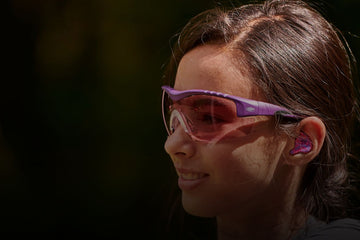Every day an estimated 1,000 eye injuries occur in American workplaces. The financial cost of these injuries is enormous–more than $300 million per year in lost production time, medical expenses, and workers compensation. No dollar figure can adequately reflect the personal toll these accidents take on the injured workers.
The Occupational Safety and Health Administration (OSHA) and the 25 states and territories operating their own job safety and health programs are determined to help reduce eye injuries. In concert with efforts by concerned voluntary groups, OSHA has begun a nationwide information campaign to improve workplace eye protection.
Take a moment to think about possible eye hazards at your workplace. A 1980 survey by the Labor Department’s Bureau of Labor Statistics (BLS) of about 1,000 minor eye injuries reveals how and why many on-the-job accidents occur.
WHAT CONTRIBUTES TO EYE INJURIES AT WORK?
- Not wearing eye protection. BLS reports that nearly three out of every five workers injured were not wearing eye protection at the time of the accident.
- Wearing the wrong kind of eye protection for the job. About 40 of the injured workers were wearing some form of eye protection when the accident occurred. These workers were most likely to be wearing eyeglasses with no side shields, though injuries among employees wearing full-cup or flat-fold side shields occurred, as well.
WHAT CAUSES EYE INJURIES?
- Flying particles. BLS found that almost 70% of the accidents studied resulted from flying or falling objects or sparks striking the eye. Injured workers estimated that nearly three-fifths of the objects were smaller than a pin head. Most of the particles were said to be traveling faster than a hand-thrown object when the accident occurred.
- Contact with chemicals caused one-fifth of the injuries. Other accidents were caused by objects swinging from a fixed or attached position, like tree limbs, ropes, chains, or tools which were pulled into the eye while the worker was using them.
WHERE DO ACCIDENTS OCCUR MOST OFTEN?
Craft work; industrial equipment operation. Potential eye hazards can be found in nearly every industry, but BLS reported that more than 40% of injuries studied occurred among craft workers, like mechanics, repairers, carpenters, and plumbers. Over a third of the injured workers were operatives, such as assemblers, sanders, and grinding machine operators. Laborers suffered about one-fifth of the eye injuries. Almost half the injured workers were employed in manufacturing; slightly more than 20% were in construction.
HOW CAN EYE INJURIES BE PREVENTED?
Always wear effective eye protection. OSHA standards require that employers provide workers with suitable eye protection. To be effective, the eyewear must be of the appropriate type for the hazard encountered and properly fitted. For example, the BLS survey showed that 94% of the injuries to workers wearing eye protection resulted from objects or chemicals going around or under the protector. Eye protective devices should allow for air to circulate between the eye and the lens. Only 13 workers injured while wearing eye protection reported breakage.
Nearly one-fifth of the injured workers with eye protection wore face shields or welding helmets. However, only six percent of the workers injured while wearing eye protection wore goggles, which generally offer better protection for the eyes. Best protection is afforded when goggles are worn with face shields.
Better training and education. BLS reported that most workers were hurt while doing their regular jobs. Workers injured while not wearing protective eyewear most often said they believed it was not required by the situation. Even though the vast majority of employers furnished eye protection at no cost to employees, about 40% of the workers received no information on where and what kind of eyewear should be used.
Maintenance: Eye protection devices must be properly maintained. Scratched and dirty devices reduce vision, cause glare and may contribute to accidents.
WHERE CAN I GET MORE INFORMATION?
- Your nearest OSHA area office. Safety and health experts are available to explain mandatory requirements for effective eye protection and answer questions. They can also refer you to an on-site consultation service available in nearly every state through which you can get free, penalty-free advice for eliminating possible eye hazards, designing a training program, or other safety and health matters.
- Don’t know where the nearest federal or state office is? Call an OSHA Regional Office at the U.S. Department of Labor in Boston, New York, Philadelphia, Atlanta, Chicago, Dallas, Kansas City, Denver, San Francisco, or Seattle.
- The National Society to Prevent Blindness. This voluntary health organization is dedicated to preserving sight and has developed excellent information and training materials for preventing eye injuries at work. Its 26 affiliates nationwide may also provide consultation in developing effective eye safety programs. For more information and a publications catalog, write the National Society to Prevent Blindness, 79 Madison Ave., New York, NY 10016-7896.
EYE PROTECTION WORKS!
BLS reported that more than 50% of workers injured while wearing eye protection thought the eyewear had minimized their injuries. But nearly half the workers also felt that another type of protection could have better prevented or reduced the injuries they suffered.
It is estimated that 90% of eye injuries can be prevented through the use of proper protective eyewear. That is our goal and, by working together, OSHA, employers, workers, and health organizations can make it happen.






























